Public Posts Seattle, WA Seattle, WA (zoom)
Is it trash I write,
as the days go by
or are there words,
you read and sigh?
Whiteness,
how I describe
the first snowfall.
Shrubs, draped
in white.
Lawn a
magic carpet.
Furniture
bearing a mantle
of Ermine.
Beautiful.
NASA Astronomy Picture of the Day:
Because the Gum Nebula is the closest supernova remnant, it is actually hard to see. Spanning 40 degrees across the sky, the nebula appears so large and faint that it is easily lost in the din of a bright and complex background. The Gum Nebula is highlighted nicely in red emission toward the right of the featured wide-angle, single-image photograph taken in late May. Also visible in the frame are the Atacama Desert in Chile in the foreground, the Carina Nebula in the plane of our Milky Way galaxy running diagonally down from the upper left, and the neighboring Large Magellanic Cloud (LMC) galaxy. The Gum Nebula is so close that we are much nearer the front edge than the back edge, each measuring 450 and 1500 light years respectively. The complicated nebula lies in the direction of the constellations of Puppis and Vela. Oddly, much remains unknown about the Gum Nebula, including the timing and even number of supernova explosions that formed it.
Photo by Victor Lima
My life is corny,
it is not a joke.
Must I now,
smoke a toke?
From out the dark,
crept morning light,
warming the air,
improving your sight.
How alone,
it must be,
when I keep searching
for my love of thee.
Do you believe
in life again?
To reincarnate,
where to begin.
The love I have,
for you today,
is here for you
and won't go away.
Walk the path
of life, without me.
View the fall foliage,
beautiful to see.
Red, orange, brown, yellow,
the leaves full of color,
reminding me of
believing in one another.
Clear, the air,
crisp the feel.
Late November,
almost surreal.
NASA Astronomy Picture of the Day:
Where will the next meteor appear? Even during a meteor shower, it is practically impossible to know. Therefore, a good way to enjoy a meteor shower is to find a place where you can sit comfortably and monitor a great expanse of dark sky. And it may be satisfying to share this experience with a friend. The meteor shower depicted was the 2022 Leonids which peaked earlier this month, and the view is from Hainan, China looking out over the South China Sea. Meteor streaks captured over a few hours were isolated and added to a foreground image recorded earlier. From this place and time, Leonid meteors that trace back to the constellation of Leo were seen streaking across other constellations including Orion. The bright red planet Mars appears near the top of the image. Bonding over their love of astronomy, the two pictured meteor enthusiasts, shown celebrating their common birthday this month, are now married.
Photo by Luo Hongyang
Samuel Johnson (1709 -1784), was an English writer who made lasting contributions as a poet, playwright, essayist, moralist, critic, biographer, editor and lexicographer. He was a devout Anglican and a committed Tory. Tall and robust, he displayed gestures and tics that disconcerted some on meeting him. Johnson's behavior and mannerisms have been documented in such detail by Boswell and other biographers that they have informed the posthumous diagnosis of Tourette syndrome, a condition not defined or diagnosed until late in the 19th century. ~ Quote Source: Samuel Johnson, The History of Rasselas, Prince of Abissinia ~ Wikipedia
NASA Astronomy Picture of the Day:
Yes, but can your rainbow do this? After the remnants of Hurricane Florence passed over the Jersey Shore, New Jersey, USA in 2018, the Sun came out in one direction but something quite unusual appeared in the opposite direction: a hall of rainbows. Over the course of a next half hour, to the delight of the photographer and his daughter, vibrant supernumerary rainbows faded in and out, with at least five captured in this featured single shot. Supernumerary rainbows only form when falling water droplets are all nearly the same size and typically less than a millimeter across. Then, sunlight will not only reflect from inside the raindrops, but interfere, a wave phenomenon similar to ripples on a pond when a stone is thrown in. In fact, supernumerary rainbows can only be explained with waves, and their noted existence in the early 1800s was considered early evidence of light's wave nature. Your Sky Surprise: What picture did APOD feature on your birthday? (post 1995)
Photo by John Entwistle








.jpg?fit=crop&w=280&h=280&q=93)





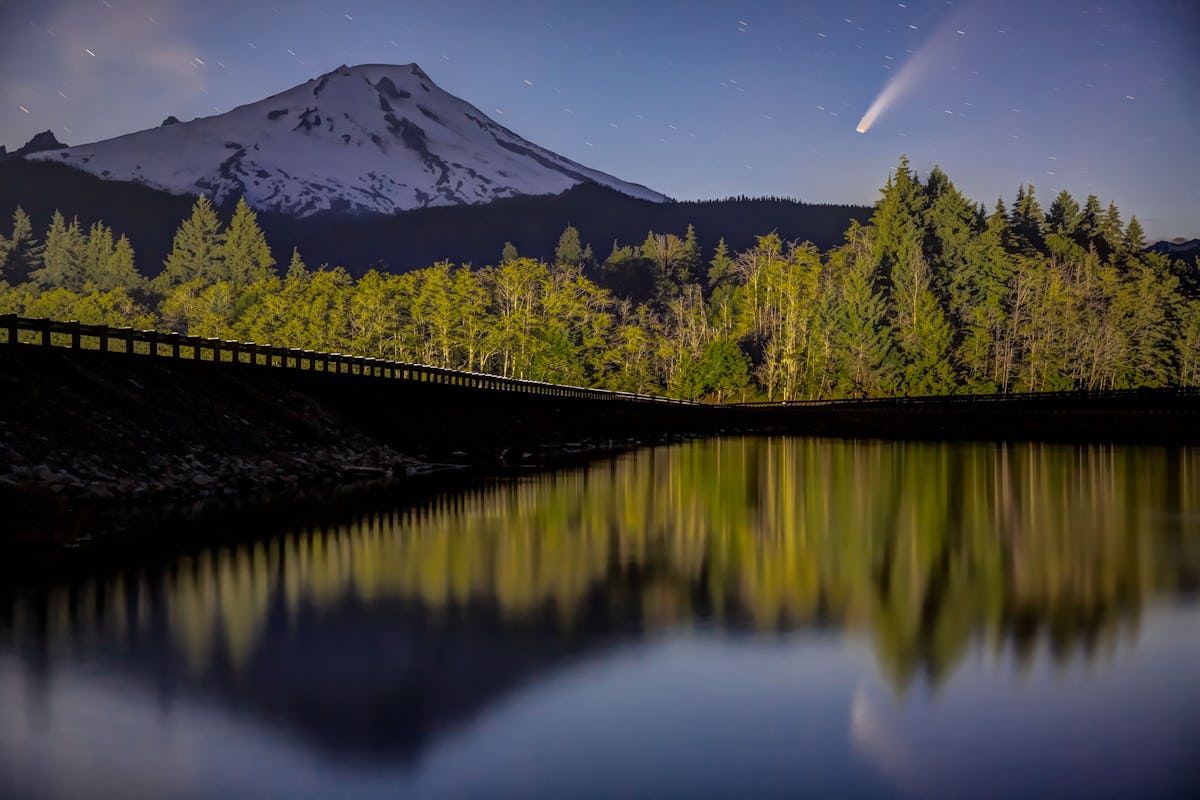


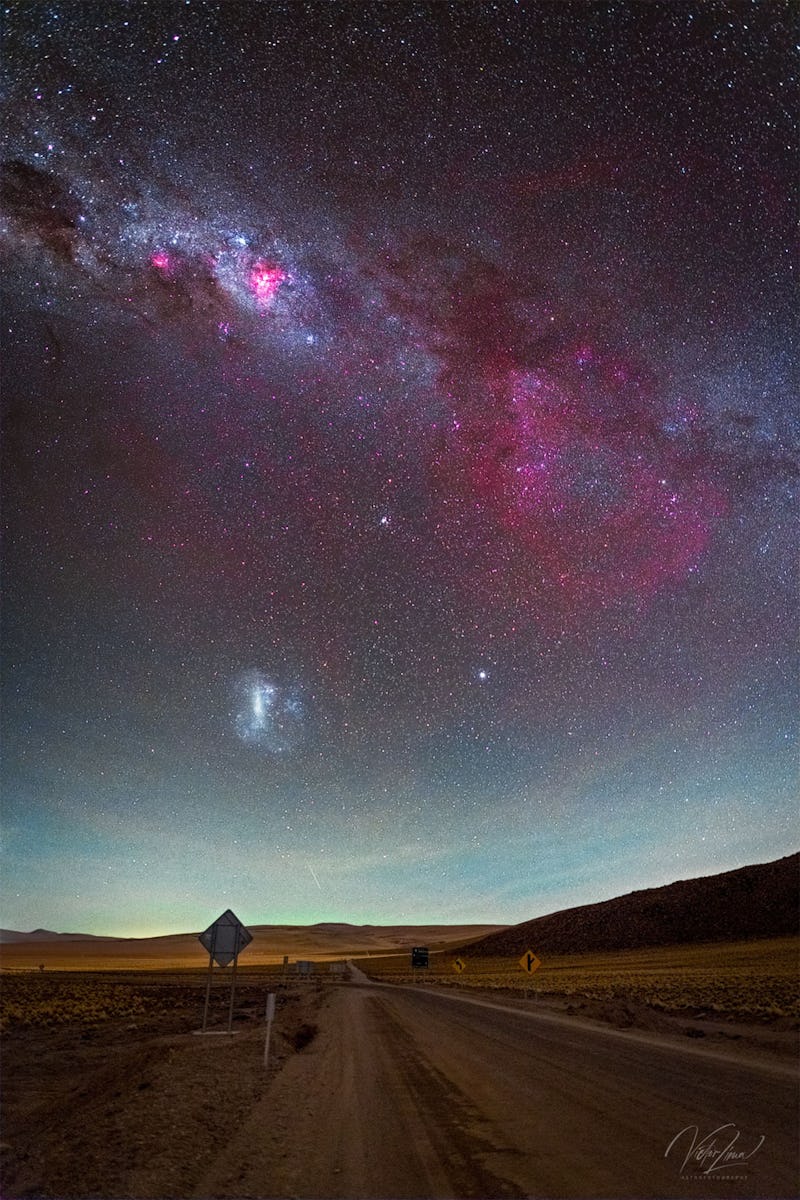
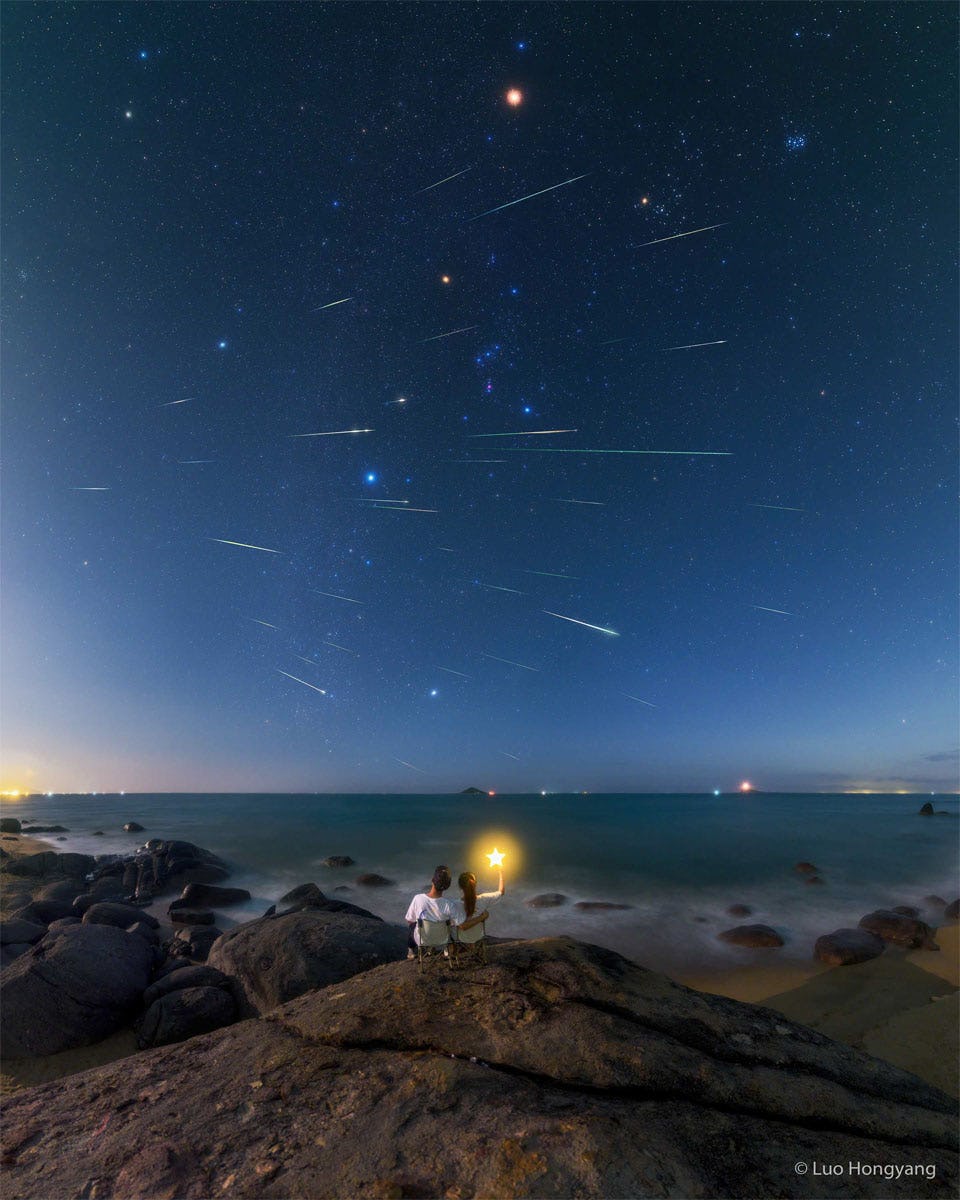

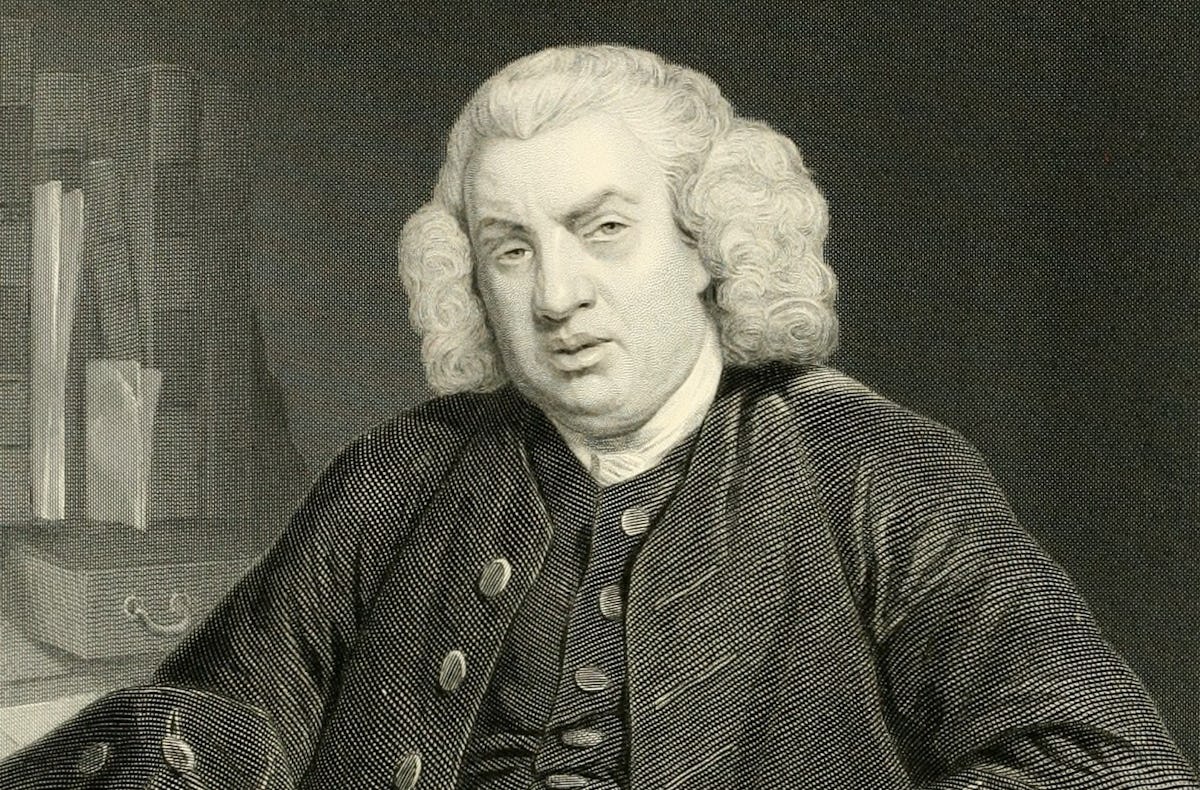
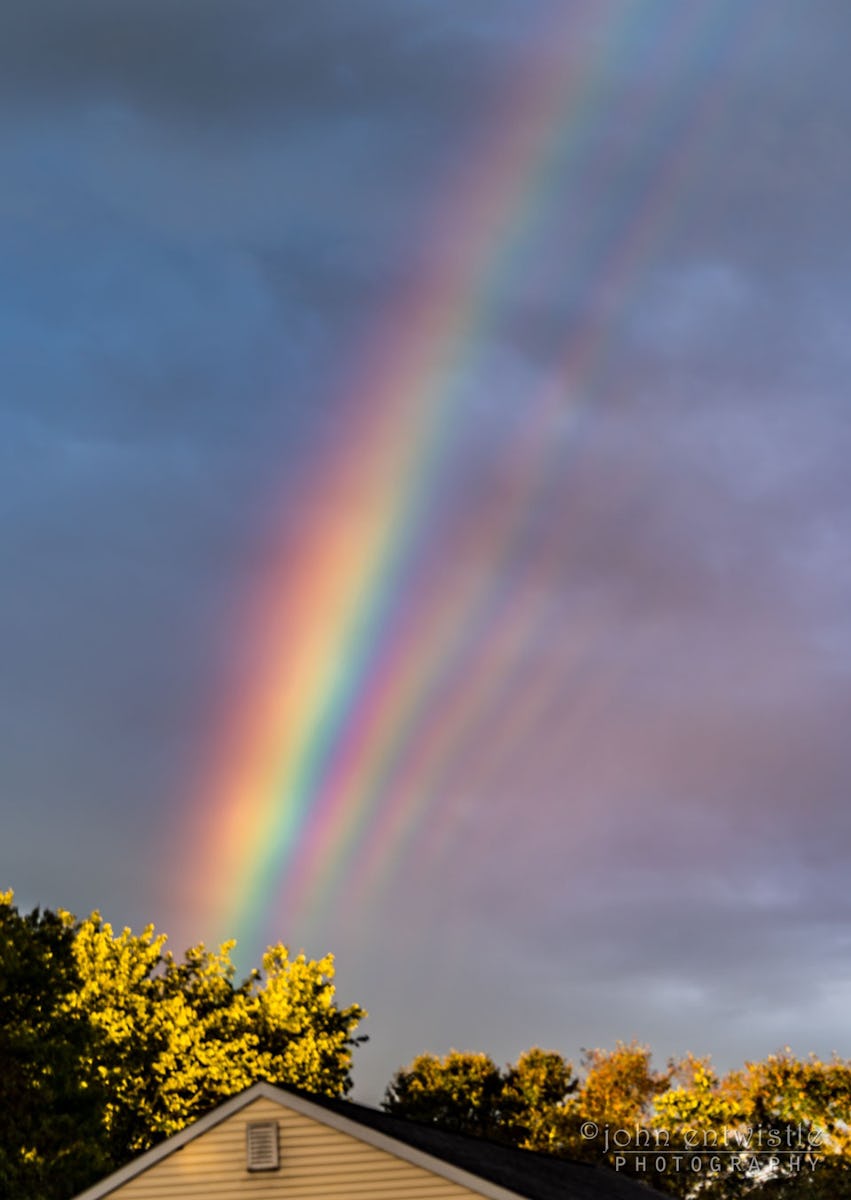

 - Copy.jpg?fit=crop&w=280&h=280&q=93)














